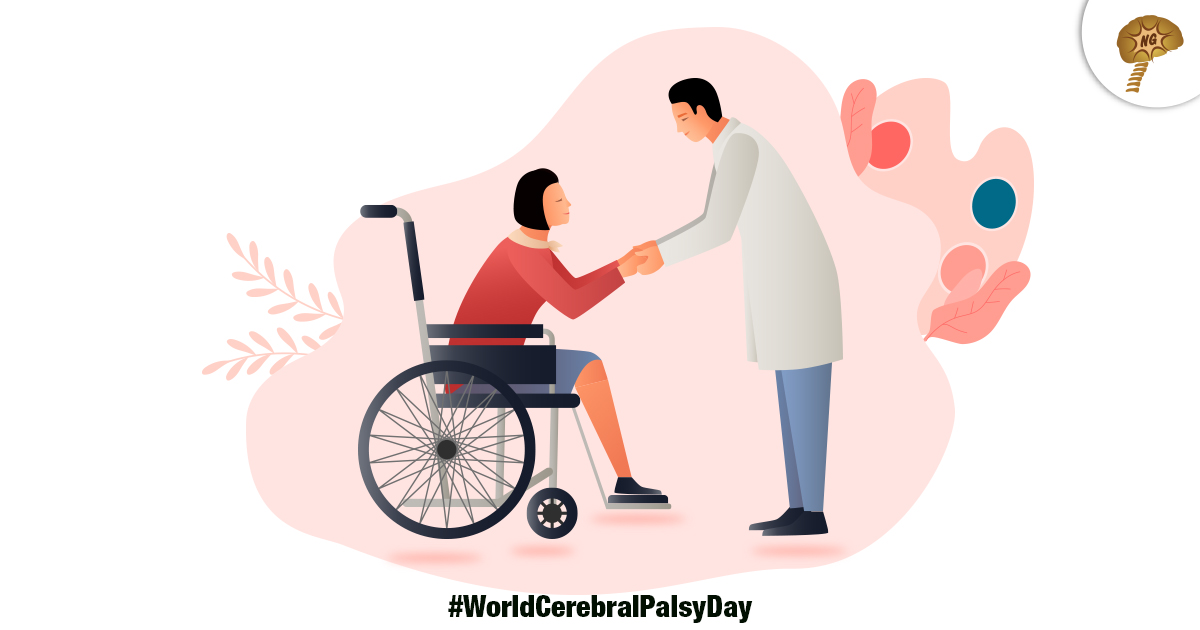
Cerebral Palsy (CP) is a group of permanent movement disorders that appear in early childhood. It is a set of neurological conditions that affect movement and is the most common childhood disability. It affects over 700,000 individuals in the United States of America and more than 1 million people in India each year. The signs and symptoms can vary among people. The symptoms often include poor coordination, weak muscles, stiff muscles, and tremors. They may include problems with vision, hearing, sensation, swallowing and speaking.
This condition is caused when the parts of the brain that control movement, balance and posture are either damaged or have abnormal development patterns. The problems occur in pregnancy very often, but they may also occur during childbirth or even shortly after birth. The cause generally remains unknown. Premature birth, being a twin, certain infections sustained during pregnancy, exposure to methylmercury during pregnancy, a difficult delivery, and head trauma during the early years of life are some of the main risk factors. In about 2 percent of cases inherited genetic factors may be involved.
Symptoms of Cerebral Palsy:
Cerebral palsy is defined as “a group of permanent disorders of the development of movement and posture, causing activity limitations that are attributed to non-progressive disturbances that occurred in the developing fetal or infant brain.” The central feature of cerebral palsy is movement problems, but difficulties with thinking, feeling, learning, behaviour and communication also often occur. In fact, 28% of sufferers have epilepsy, 58% have difficulties with communication, about 42% have problems with their vision, and 23-56% have learning disabilities. People with this disorder also get muscle contractions which may arise from overactivation. Speech and language disorders are common among affected individuals.
Babies born with severe cerebral palsy often have abnormal posture, with their bodies being either very floppy or very stiff. Birth defects such as a small head, spinal curvature or a small jawbone can occur along with cerebral palsy. Symptoms of the condition may appear as the child gets older, with the symptoms becoming apparent when the child is approximately 6 to 9 months old and starting to move independently when asymmetry in movement, preferential use of limbs, or delay in gross motor development can be observed.
Treatments for Cerebral Palsy:
Treatment for cerebral palsy is multifaceted, often requiring multiple doctors and therapies. Early treatment usually has the greatest chance of improving a child’s condition. The purpose of the treatment is to enable the patient to live the most manageable, normal and healthy life possible. This can be achieved through various therapeutic treatments that allow people with the disorder to maximize their independence in daily life.
No two people with cerebral palsy receive exactly the same treatment, which encompasses the short-term and long-term management approaches to each of the specific combinations of issues that a child may face. Treatment often includes medication, physical therapy, even surgery and more.
The treatment options that are currently available help the patients in managing the symptoms to some extent, but they do not repair the underlying brain damage. Thus it is a priority to develop a standard approach. Many scientists and researchers around the world are now considering stem cell therapy as a potential treatment option for incurable disorders. Stem cell therapy makes it possible to repair damaged tissues in the brain, which is why it is a very viable option in treatment for cerebral palsy.








